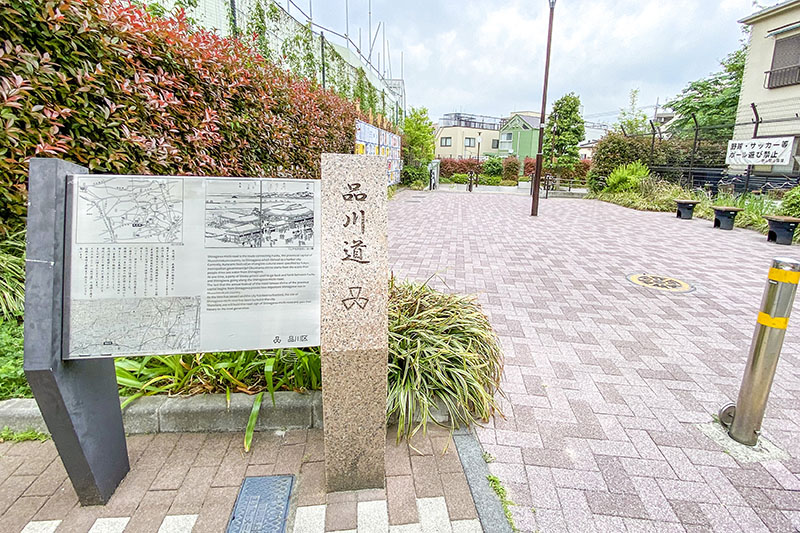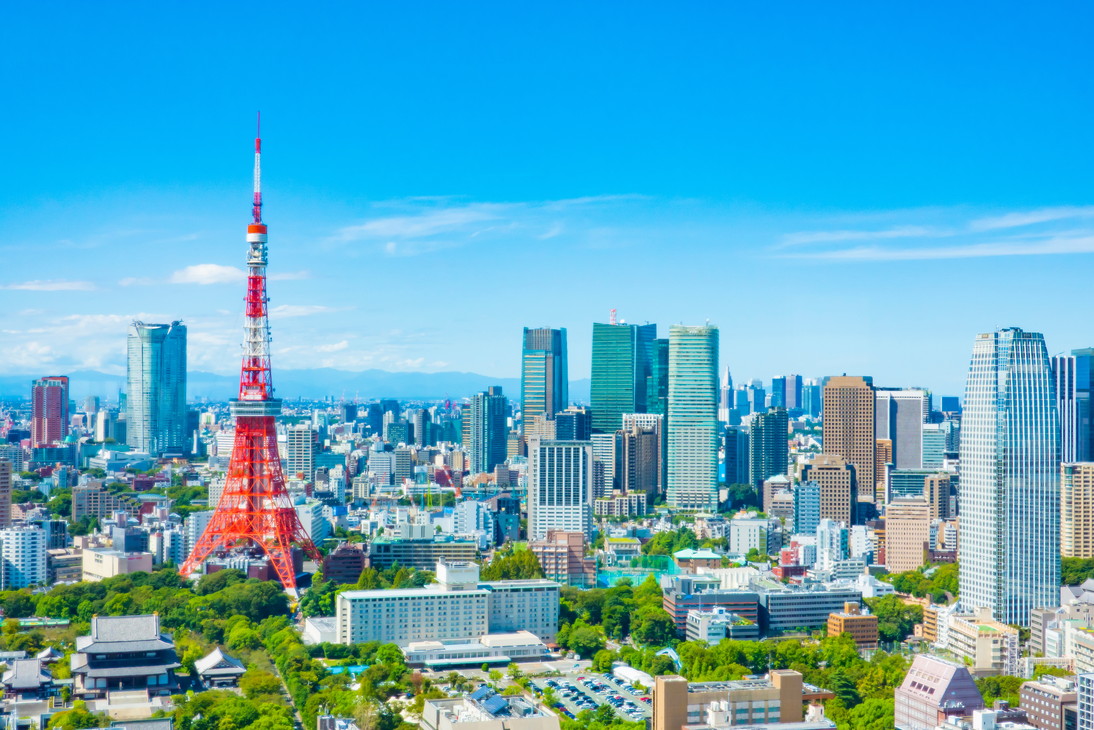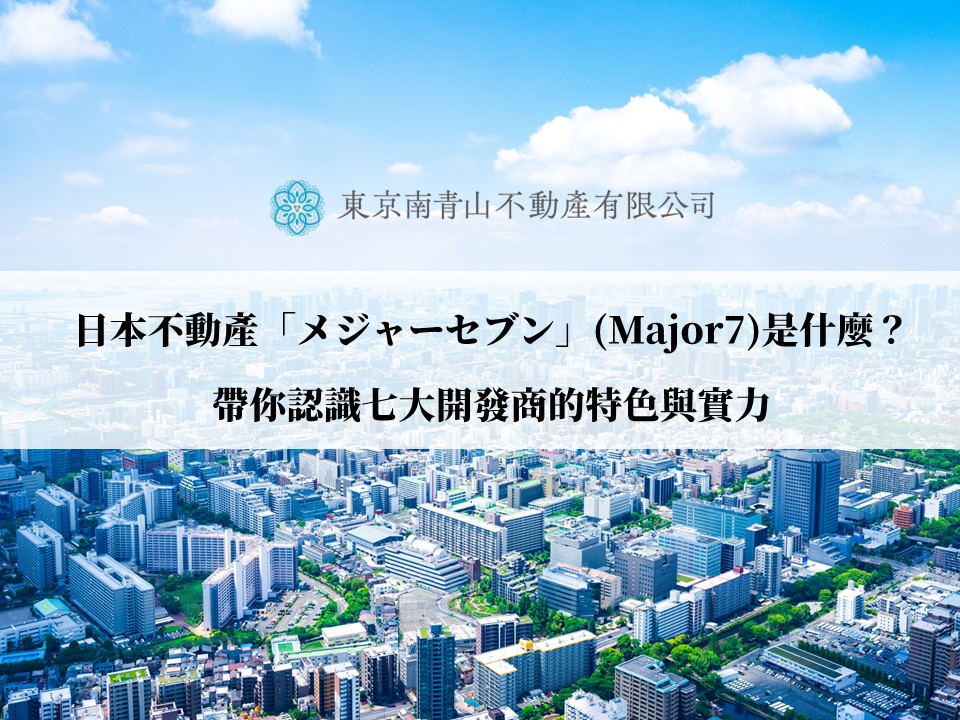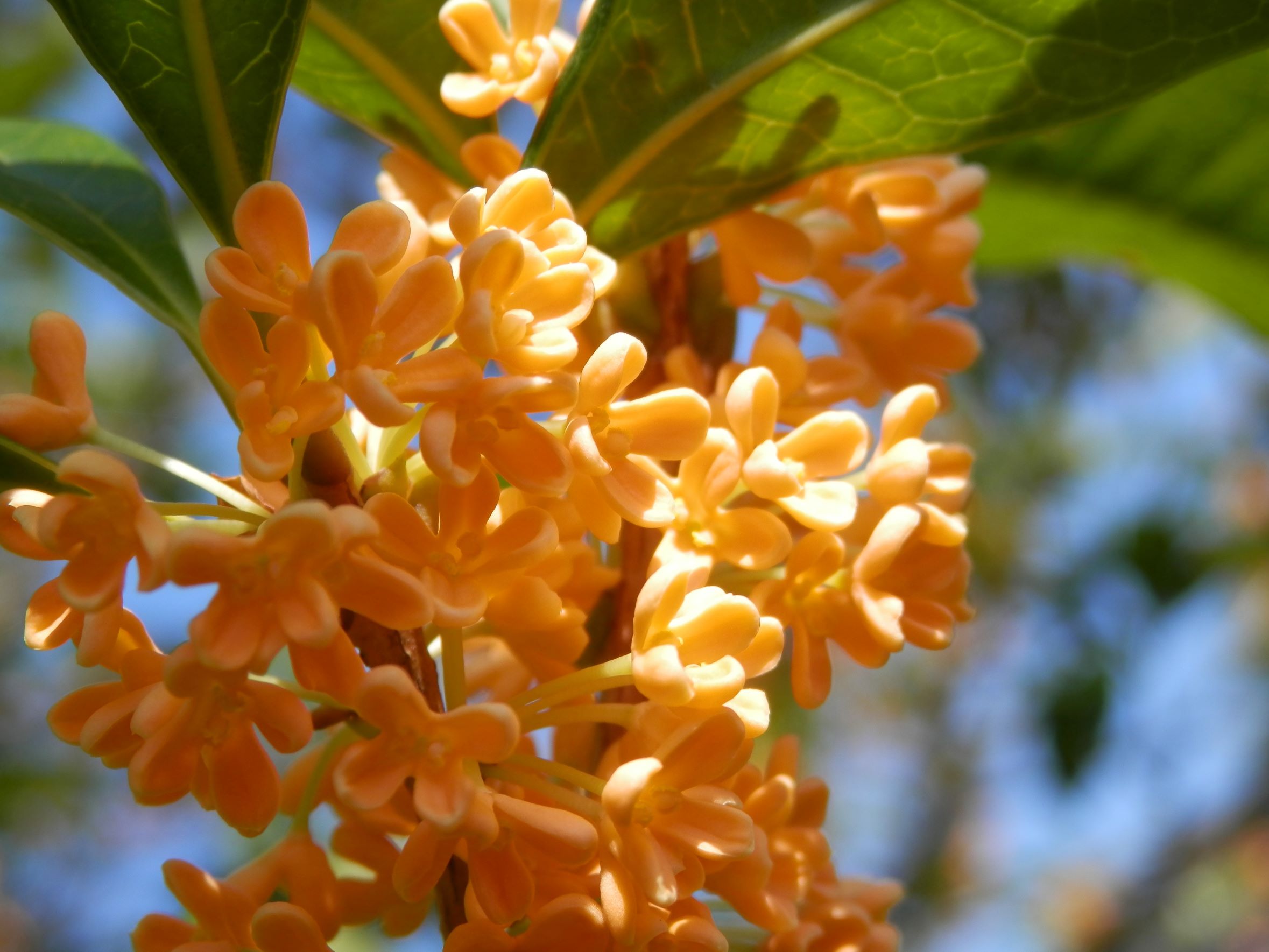Shinagawa Ward gives the impression of being an urban area lined with office buildings, but it is also an attractive place to live. The vibrant shopping streets, such as the Togoshi Ginza Shopping Street and the Musashikoyama Shopping Street, are in fact the longest shopping streets and arcades in Tokyo respectively.
Shinagawa Ward consists of the lowlands near Tokyo Bay in the east and the Musashino Plateau in the west, with the Meguro River flowing to the east. During the Edo period (1603-1867), the Tokaido Route connected Edo with the western part of Japan, and many people travelled between the two cities. Even today, the area is an important traffic hub, with arterial roads such as the Keihin Kokudo and Daini Keihin running through it. The photograph shows the Keikyu Main Line intersecting the Keihin Kokudo near Minami-Oi.
The current Shinagawa Ward was created in 1947 through the merger of the former Shinagawa and Ebara wards. The present Shinagawa area is introduced here as the 'Shinagawa Area'.
Former Tokaido Shinagawa-juku
Keikyu Main Line intersecting the Keihin National Highway.
■1 The Shinagawa Area Up to the Middle Ages
The Shinagawa area has been the site of human activity since ancient times, with archaeological sites from the Jomon period having been excavated. In particular, the Omori Shell Mounds, a site from the late Jomon period, is known as the first academic excavation in Japan.
This discovery was made in connection with Japan's first railway, which opened in 1872: in 1877, Dr Morse, a zoologist from the USA, came to Japan and discovered the 'Omori Shell Mounds' from a train window, looking at the strata of the plateau that had been cut down for the construction of the railway. The photograph shows the Omori Shell Mounds monument, erected in 1929. Incidentally, Omori is the name of a place in Ota Ward, but recent research suggests that the current excavation site is near Oi 6-chome, Shinagawa Ward, and the surrounding area has been developed as the 'Omori Shell Mounds Site Garden'.
In the Nara and Heian periods, Shinagawa Minato developed as an outer port of the 'national capital' of the 'Musashi Province' (now Fuchu City, Tokyo), and Shinagawa and Fuchu are said to have been connected by the 'Shinagawa Road'. In 2016 (Heisei 28), a signpost of Shinagawa-michi was installed at the Nakanobu Michishirube Disaster Prevention Plaza in the photograph to convey the history of Shinagawa-michi to future generations.
Monument to 'Omori Shell Mounds'
the Nakanobu Michishirube
■2 Shinagawa in the Early Modern Period
In the Edo period, Shinagawa was served by the Tokaido Route, one of the five routes. The Tokaido Route was the most important transportation route linking Edo with Kyoto and the western part of Japan, and Shinagawa was the first post town to be established in Shinagawa. It played an important role as the gateway to Edo and also flourished as a recreational area. Even today, traces of the former Shinagawa-juku can still be seen along the Old Tokaido Route.
The left bank of the Meguro River is a naturally rich sloping area where the daimyo's palaces (villas) were located. In the Shinagawa area, the residences of the Okayama, Sendai and Tottori clans were established, and after a period of homes for the nobility and other influential people in the Meiji era, the history of the area is now inherited as the residential areas of 'Ikedayama' and 'Ikedayama Park', 'Shimazuyama' and 'Seisen University' and 'Gotenyama' respectively. The photo shows Nemunoki no Niwa, a park in Shinagawa Ward. The park was developed on the former site of the Shoda Residence in 'Ikedayama', which was the family home of the Japanese Upper Empress, and is planted with a symbolic Nemunoki tree, a rose named 'Princess Michiko' and about 50 other varieties of plants and flowers.
At the end of the Edo period, the Shogunate built eight 'daiba' off Shinagawa to defend Edo against the 'black ships'. Today, the famous 'Daiba No. 3' remains as 'Daiba Park' (Minato Ward), but part of the 'Daiba No. 4' is used for the reclaimed land of 'Tennozu Isle' in Shinagawa Ward. The "Gotenyama Shimo Daiba", a land-based gun emplacement, was also built near the "Shinagawa-juku". Part of the site is now used as the 'Shinagawa Ward Daiba Elementary School'. The technology used to build the "Daiba" on the sea was utilised in the Meiji period (1868-1912) to build an embankment (now called the "Takanawa Embankment") on the sea and to construct a railway line.
Nemunoki no Niwa(Garden)
Shinagawa Ward Daiba Elementary School
■3 Shinagawa Area in the Meiji Period
The Shinagawa area became a link between Edo (Tokyo) and Yokohama (the port of Yokohama) when the country was opened to the outside world at the end of the Edo period, and many foreigners began to travel along the Tokaido Route. 1872 (Meiji 5) saw the opening of the railway between Shimbashi and Yokohama, and Shinagawa was the first station to operate when the railway was temporarily opened. The original station was located just north of Shinagawa-juku, but was later relocated further north and thus a little further away from Shinagawa-juku. The current 'Shinagawa Station' is therefore located in Minato Ward, not Shinagawa Ward.
In the late Meiji period (1868-1912), the Keihin Electric Railway (now the Keikyu Line) was opened and Shinagawa Station (now Kita-Shinagawa Station) was also opened, further improving transport links, and the area along the Shinagawa coast developed as a holiday resort for sea bathing and as a holiday home. The photograph shows the elevated Keikyu Line between Kita-Shinagawa Station and Shin-bamba Station.
'Shinagawa-juku', National Diet Library collection.
Keikyu Main Line
■4 Oimachi Developed as an Industrial Area
Oimachi developed as an industrial area following the opening of woollen mills in the early Meiji period. By the early Showa period, the Oi Factory of the Japanese National Railways, Tokyo Shibaura Electric (now Toshiba), Masaki Yamato Pencil (now Mitsubishi Pencil), Nippon Kogaku Kogyo (now Nikon) and other factories were also located here.
The Mitsubishi Pencil factory has now relocated, but the head office is still in Oimachi. The photo shows a bench in front of the Mitsubishi Pencil head office. The process of making pencils is reproduced.
The JNR "Oi Factory" is now the "Tokyo General Rolling Stock Centre" of JR East.
a bench in front of the Mitsubishi Pencil head office
Tokyo General Rolling Stock Centre
■5 Developed as a Residential Area and Today
In the Taisho period (1912-1926), with the development of transport systems, the EBARA ward in particular developed as a residential area in the suburbs of Tokyo, as 'arable land clearance' and 'land readjustment' were actively carried out in the area. After the Great Kanto Earthquake, more and more people moved from the city centre and the area developed further as a residential area, and a shopping street developed in front of the station. The shopping streets of Musashikoyama and Togoshi, which are still busy today, date from this period.
As urbanisation progressed rapidly in the early Showa period, the area was incorporated into Tokyo City in 1932, becoming the former Shinagawa and Ebara wards.
Palm Shopping Street
Togoshi Ginza Shopping Street
■6 Attractions of Today's Shinagawa Ward
In 1947, after the end of the war, the former Shinagawa and Ebara wards merged to form the present Shinagawa Ward.
The area around Shinagawa-juku, on the Old Tokaido Route, is a place where wide streets and old buildings from the Edo period still remain, and where history and tradition can be felt.
The area also once developed as an industrial area, but there are now fewer factories and it mainly serves as a residential area close to the city centre.
The reclaimed land on the waterfront is home to the Port of Tokyo wharf and other logistics hubs, as well as many large-scale parks such as Shinagawa Kumin Park, Oi Wharf Central Seaside Park and Higashi-Shinagawa Marine Park, which provide residents with places for relaxation, leisure and sporting activities.
sasikae “The Five Pilgrim Stations of the Tokaido: Shinagawa, Hinode”, National Diet Library collection.
Higashi-Shinagawa Marine Park
■7 The Future of Shinagawa Ward
In April 2023, the JR East Group began full-scale work on a large-scale mixed-use development, ‘the Oimachi Station Area Hiromachi District Development’ (provisional name), which is scheduled to open at the end of FY2025. A new ward office building for Shinagawa Ward is also planned for the adjacent land. A cinema complex, commercial facilities with various tenants, a hotel and other facilities, public space for events and a deck overlooking railway cars are expected to create a new liveliness in the entire Oimachi area.
In addition, elevated construction is underway between Kita-Shinagawa Station and Shinagawa Station on the Keikyu Line, and a station square is planned at Kita-Shinagawa Station.
Moreover, construction of the first station of the Linear Central Shinkansen Line is under way underground at Shinagawa Station, which is located just north of Kita-Shinagawa, although it will be in Minato Ward, and when completed will improve accessibility to Yamanashi, Nagano and Nagoya prefectures.
https://www.jreast.co.jp/press/2022/20230307_ho03.pdf
https://www.city.shinagawa.tokyo.jp/ct/pdf/20230112204801_4.pdf
‘The Oimachi Station Area Hiromachi District Development’ (provisional name) as seen from Shinagawa Ward Office.
JR East Image of Development Area
■Mini-Columns: 'Sendai Miso' - a History of Miso since the Edo Period
In 1658 (Manji 1), the second lord of the Sendai clan, Date Tadamune (second son of Date Masamune), received a plot of land in Oi-mura (now Higashi Oi 4-chome) from the shogunate and used it as his residence. Later, the area was also used to produce Sendai miso for the Sendai clan's samurai and others, and by the end of the Edo period it had become a well-known Edo speciality. The production of miso continued after the Meiji Restoration and is now known as the Sendai Miso Brewery.
We hope you will try Sendai Miso in Shinagawa Ward, which has a history dating back to the Edo period.
Sendai Miso Brewery
Sendai Miso











